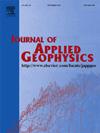Reflection waveform inversion based on Wasserstein-2 distance
IF 2.2
3区 地球科学
Q2 GEOSCIENCES, MULTIDISCIPLINARY
引用次数: 0
Abstract
The background velocity model is essential for accurate imaging, particularly in complicated geological features, as it serves as the foundation for high-precision velocity inversion. Reflection waveform inversion (RWI) plays an important role in reconstructing this model by efficiently tracing reflection wave paths, combining reflection energy with the demigration operator to enable precise velocity updates. However, the conventional least-squares norm objective function, sensitive to amplitude and phase variations in reflections, often leads to local minima, compromising inversion accuracy. To address this issue, this paper introduces an optimized inversion method based on optimal transport theory, specially using Wasserstein-2 distance. This approach reduces the dependence on reflection amplitudes and enhances the convexity of the objective function, mitigating the risk of local minima. Additionally, this paper incorporates the Poynting vector for wavefield decomposition, which enables more accurate tracing of reflection wave paths. Numerical tests demonstrate that this method significantly improves both the accuracy and stability of the inversion, providing a more accurate background velocity for FWI.
求助全文
约1分钟内获得全文
求助全文
来源期刊

Journal of Applied Geophysics
地学-地球科学综合
CiteScore
3.60
自引率
10.00%
发文量
274
审稿时长
4 months
期刊介绍:
The Journal of Applied Geophysics with its key objective of responding to pertinent and timely needs, places particular emphasis on methodological developments and innovative applications of geophysical techniques for addressing environmental, engineering, and hydrological problems. Related topical research in exploration geophysics and in soil and rock physics is also covered by the Journal of Applied Geophysics.
 求助内容:
求助内容: 应助结果提醒方式:
应助结果提醒方式:


